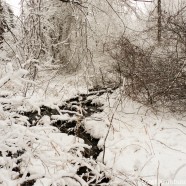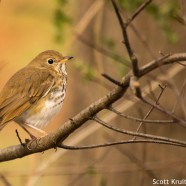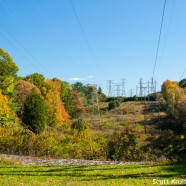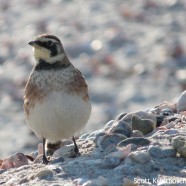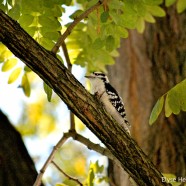Snowy Wetlands
If you can manage to discover any open wetlands in January where water still flows you may be in a store for a treat when it comes to some of the hidden birds in and around this habitat. Natural springs may run even when the temperature is well below freezing. Some streams find a way to keep warm and draw in wildlife, too. The tiny Winter Wren can be found in a place like this, hopping from rock to rock. One may turn up a very well hidden American Woodcock using the exposed earth to search for earthworms. Ruby-crowned Kinglets may be feeding at eye-level as they hope for insects in the air...
Read MoreAutumn Hermit Thrush (Catharus guttatus)
This beautiful Hermit Thrush (Catharus guttatus) posed wonderfully for me in the shade earlier today, taking a quick break from foraging in mounds of leaf litter. They are a shy species that can be found on the edges of forests and woodlands, even your yard, if there is enough space and habitat for them to find insects. As we near the winter their diet is going to shift to include various berries. I was surprised to find several of them this weekend, possibly having moved south and been more boldly active given all of the cold temperatures lately. They will enjoy this warm-up making bug...
Read MorePowerline corridors, plants and wildlife
Powerline corridors, as well as gas and oil pipeline right of ways, are often an unexpected habitat oasis. They cover millions of acres of land in America. They may also provide a tremendous benefit to plants and wildlife that favor scrub or early successional habitat, a type that we do not favor in our development otherwise. Certain bees and butterflies to flowers and birds can all end up winning if these strips are managed properly – limiting mowing, chemicals, invasive plants and so forth. As humans have worked to protect forests we have neglected to do the same for this habitat...
Read MoreHorned Lark (Eremophila alpestris)
The Horned Lark (Eremophila alpestris) is a species of open areas – the tundra, grasslands, fields, beaches and dunes and even the desert. Unsurprisingly they feed on the ground on insects and seeds and often take advantage of human activity disturbing areas such as mowed airports or piles of plowed earth or snow that expose more food. When it comes to the winter you will find them wherever it is the most bare. You can frequently spot them with Snow Buntings and, more rarely, the Lapland Longspur. They are also another species decreasing across much of their range and are listed as...
Read MoreDowny Woodpecker (Picoides pubescens)
Downy Woodpeckers (Picoides pubescens) are a common sight in the region and can typically be seen hammering away at the bark of a tree, attempting to uncover a nice juicy larval insect. These woodpeckers aren’t terribly picky, and have recently been found to munch down Emerald Ash Borer (EAB) larvae, an invasive species of beetle attacking ash trees. As EAB has spread throughout several states, scientists have been seeing rising population numbers as a result of increased food resources in at least four bird species, including the downy woodpecker. While woodpeckers may have some...
Read More



